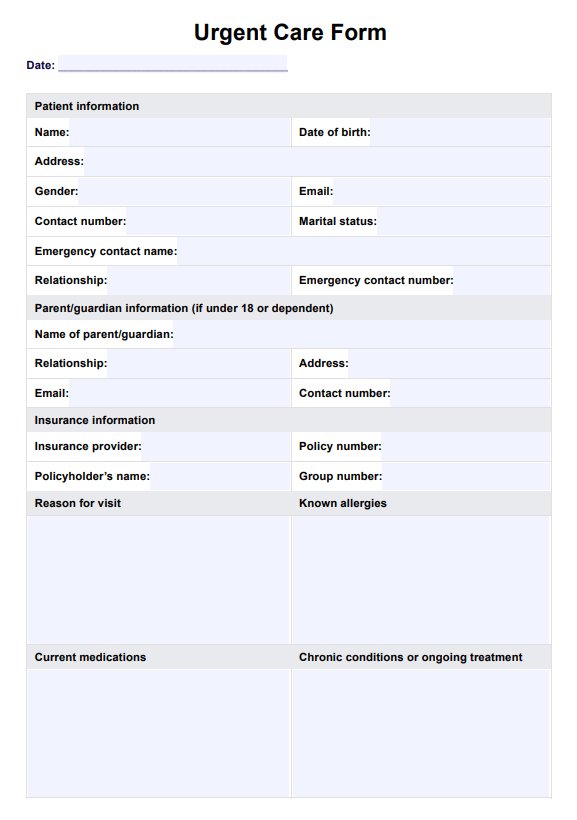In healthcare, "urgent" refers to a condition or situation that requires prompt medical attention but is not life-threatening, typically needing care within 24 hours.

Urgent Care Form
Streamline patient check-in and expedite care with our Urgent Care Form template, designed to efficiently gather vital patient information.
Use Template
Urgent Care Form Template
Commonly asked questions
Emergency care is medical treatment provided for severe, life-threatening conditions that require immediate attention, such as heart attacks, strokes, or major injuries.
Urgent care addresses non-life-threatening conditions that need prompt attention, while emergency care is for serious, life-threatening issues requiring immediate, advanced medical intervention.
EHR and practice management software
Get started for free
*No credit card required
Free
$0/usd
Unlimited clients
Telehealth
1GB of storage
Client portal text
Automated billing and online payments











